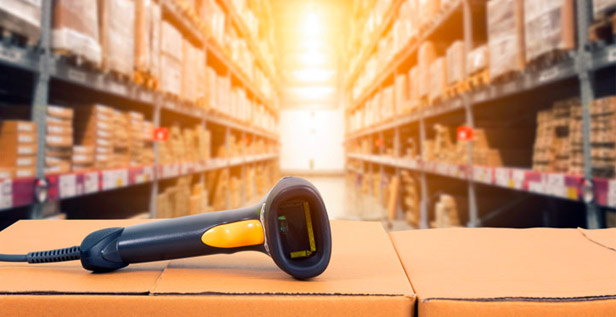News July 14, 2021
Inventory Shortfalls, Higher Prices Loom for Promo’s Q4
Supply chain pressures are triggering the anticipated challenges during promo’s busiest time of the year.
Q4 just got more complicated.
Expect product shortages to impact the promotional products industry during what’s traditionally its busiest time of the year – the fourth quarter holiday gifting season. Further pricing volatility could come into play, too.

That’s the message from promo suppliers, who say the ongoing supply chain issues that have driven inventory shortfalls, increased prices on products, and led to delays in order fulfillment so far in 2021 will continue to affect the industry at least through year’s end.
Their plea to distributors? Get your Q4 orders in as early as possible, especially if clients want built-from-scratch custom pieces. Today wouldn’t be too soon.
“Customers who place orders earlier will get what they want,” says Jing Rong, vice president of global supply chain and compliance at Top 40 supplier HPG (asi/61966). “Those who wait until the last minute might only get what’s available.”
#Promoproducts distributors should already be working on the Q4 holiday gift season with clients as inventory shortfalls & fulfillment delays could get worse, this 90-second video explains. @asicentral @ASI_MBell @TheresaHegel @Tim_Andrews_ASI @MeganErber @Melissa_ASI pic.twitter.com/hPwyBF1y1N
— Chris Ruvo (@ChrisR_ASI) June 18, 2021
Inventory Gaps & Escalating Prices
In general, suppliers believe both hard good and soft good product categories will experience shortfalls, to varying degrees, at points during the remaining third quarter and the fourth. Some categories could fare worse than others.
“Bags, drinkware, and outdoor products are likely to be the most affected because they’ve had the quickest recovery in demand. And as such, they’re competing with retail for production capacity,” explains Sandeep Jain, vice president of vendor relations, sourcing and compliance at Top 40 supplier Koozie Group (asi/40480).
Rong believes that electronic/tech products will experience some of the most significant shortfalls in inventory depth. “The severity of the global chip shortage has gone up a notch, and I anticipate it will get worse as retailers start to stock up for Q4,” Rong says.
As buying for the holiday season intensifies, gaps in apparel stock could widen, too.
“I expect inventory shortages in apparel to last into the first half of 2022,” says Jeremy Lott, who ranks first on Counselor’s Power 50 list of promo’s most influential people and who is CEO/president of SanMar (asi/84863), the industry’s largest supplier. “Tremendous shortages in yarn and other raw materials is hampering our ability to re-inventory.”
Our own @ChrisR_ASI on planning for Q4 in June due to supply chain issues:
— ASICentral (@asicentral) June 23, 2021
"Do yourselves and your clients a favor: Act now."#ASIMedia https://t.co/UeAT1hxKEk
Industry-wide, suppliers this year have already increased pricing on virtually all product categories to offset soaring costs they’re experiencing related to shipping/importing, raw materials, labor and transport. Those cost pressures aren’t abating and could even intensify in the weeks and months ahead, according to some executives.
As such, additional price increases are already in the works and more could possibly follow later in the year. As just one example, Polyconcept North America (PCNA, asi/78897), the industry’s fourth largest supplier, plans to implement price increases on August 2. PCNA, like other suppliers, had previously increased pricing in the spring.
“While we have made every effort to offset (rapidly rising costs), we are unfortunately at the point where that is no longer sustainable,” PCNA said in a communication to customers. “We hope conditions improve and this will be the last pricing action we need to take for the balance of 2021.”
A Broken Supply Chain
Just like PCNA, good suppliers throughout promo are working hard to tackle inventory challenges and to keep price hikes at a minimum. Still, they’re dealing with factors that, to a large degree, are beyond their control.
The gist of it is that the global supply chain is broken, something that’s affecting every industry, not just promo. As COVID-19 societal restrictions lifted in 2020, demand across industries bounced back far quicker than expected, throwing global sourcing into disarray – a condition that persists to today.
Got 1 minute? Then you can get the basics on what's causing inventory shortfalls & rising prices in the #promoproducts industry with this vid. More depth? Read: https://t.co/rTZceaX0dP @Melissa_ASI @Tim_Andrews_ASI @ASI_MBell @asicentral pic.twitter.com/N7aT0U7TY5
— Chris Ruvo (@ChrisR_ASI) June 8, 2021
Massive demand from western importers, combined with opportunistic practices of shipping companies, have exponentially increased the cost of importing, including from China, where most promo products sold domestically are produced. “The cost per container from China to the U.S. West Coast has increased by 7.5 times compared with February 2020 prices,” notes Dilip Bhavnani, a Power 50 member and chief operating officer at Los Angeles-based Top 40 supplier Sunscope (asi/90075).
Even as suppliers pay the price, it’s taking longer to get products stateside because demand is so rampant that there’s not enough ocean/air cargo space to move goods across the world at the rate importers were accustomed to before COVID. Backlogs at ports and snags in transport related to getting goods to warehouses for stocking have also gummed up the works. The result: delays in inventory replenishment.
“It’s been a struggle for suppliers to get product out of port yards and onto railways or trucks,” shares Adam Black, Koozie Group’s director of supply chain planning. “We’re consistently arranging trucking for urgent shipments. Finding transportation equipment has been challenging and very costly. Freight rates have spiked and fixed rate bookings have shrunk. As a result, we’re paying premium rates for a higher percentage of bookings, which means our non-product costs are a higher contribution percentage of total product costs.”
While some supplier executives think the worst of importing pressures could ease by late summer/early autumn as retailers get their holiday inventories to North America, others worry that the challenges could intensify. “The shipping situation is likely to deteriorate further as we approach Q4 given higher demand and limited capacity,” says David Nicholson, a Power 50 member and vice chairman of Polyconcept, the parent company of PCNA.
Complicating matters further is fallout from a COVID outbreak at Yantian International Container Terminal, a deep-water port in Shenzhen, Guangdong, China, through which about a quarter of that country’s massive exports flow. While the port has resumed normal operations after being crippled by the localized virus flare up, the resulting backlog and related disruptions “are likely to persist for months to come, possibly even impacting the seasonal Christmas shipments,” The Maritime Executive reported.
Backlogs at a port in China, resulting from a #COVID outbreak, are poised to cause more supply chain havoc, which could further impact inventory shortfalls & pricing in the #promoproducts space. https://t.co/U5WDGit3MR @ASI_MBell @asicentral @Melissa_ASI
— Chris Ruvo (@ChrisR_ASI) June 24, 2021
“Taking extra cargo to handle the backlog from Yantian will lead to a reduction of available capacity out of other ports in Asia. The problem will be felt across the market in the coming weeks,” says Rong. Adds Nicholson: “Yantian is another compounding factor in the problematic shipping situation. At this stage, even the smallest disruption creates a major ripple effect downstream in the supply chain; there’s simply not enough slack to compensate.”
Delays in inventory replenishment are exacerbated further by the fact that competition for raw materials and production space is rife. Both materials and manufacturing are also costing more. Speaking of escalating expenses: Labor shortages are forcing suppliers to pay higher compensation rates to attract workers to the production, fulfillment and customer service jobs that are vital to providing distributors with efficient fulfillment and responsive, informed service. That contributes to rising product costs and drags on timely order completion and customer experience.
And then there’s unfavorable currency exchange rates: Over the last year or so, the dollar has depreciated against China’s yuan, shoveling more cost pressure on suppliers. “We’re paying almost 5% more for the same product purchased at the same cost compared to 12 months ago,” says Bhavnani. He adds: “We’re facing issues that I have not seen in the 35 years I’ve been importing product.”
Proactive Suppliers
Savvy suppliers aren’t taking the challenges lying down. They’re doing their best to navigate the importing/transport storm, pricing pitfalls and labor challenges. One common tactic is ordering more inventory than usual, farther in advance.
Take PCNA. Earlier this year, the Top 40 firm invested an incremental $10 million in inventory for top-selling products. Today, the supplier’s in-stock rates are at a 95% level with additional replenishment orders arriving during summer, executives say. To further strengthen its inventory position, PCNA is investing in additional inventory: an incremental $20 million across a variety of top-selling products.
“We’re buying much earlier in our cycle and at a much higher level to compensate for the myriad of supply chain issues,” says Nicholson.
PCNA isn’t alone in such moves. “We have already made significant inventory purchases to ramp up for Q4 and the holiday season,” says Koozie’s Jain. “Limited shipping space will play a large role in the ability to build stock; however, we’re preparing for significant deliveries in July and August.”
Says HPG’s Rong: “We have already ordered the inventory for our Q4 season. We expect to get this inventory on the ocean this month.”

“We’re helping our distributor customers navigate this unique period of challenges.” – Andrew Brodey, alphabroder/Prime Line
Some suppliers are also working side-by-side with distributors to get important Q4 orders processed earlier in the year than normal. “We run several large programs for Q4 deliveries,” Bhavnani shares. “With each of these programs, we’re working with our distributor partners to get their orders in by the end of July so we can ensure timely deliveries. This is a full 60-to-90 days earlier than normal.”
Meanwhile, the source abroad team at alphabroder (asi/34063)/Prime Line (asi/79530) is helping distributor customers “reserve” their goods for the holidays by planning ahead and ordering in the next two months, says Andrew Brodey, vice president of sourcing. “The value add is that we guarantee the goods, and we can offer aggressive pricing and customization,” Brodey declares. “We’re helping our distributor customers navigate this unique period of challenges.”
Additionally, leading suppliers that have experienced labor shortages report that they’re aggressively recruiting to beef up staff levels as fast as possible. That’s certainly underway at PCNA, which has also expanded decoration capacity and introduced new digital capabilities for drinkware, providing what company leaders say is a more efficient and higher quality process for multi-color requirements. Nicholson notes that all PCNA divisions are running at standard lead times with the exception of Bullet, which has extended lead times for bag and drinkware categories.
Despite the multitude of issues, suppliers say there are positives to keep in mind.
“On the bright side, the inventory issues and other challenges that we’re facing are a result of high demand – a clear sign that our industry is rebounding,” says Black of Koozie Group.
In its recent message to distributors, PCNA said: “While challenges remain, we have many reasons to be encouraged. The strong order volume we are experiencing is certain to continue as employees return to the workplace, and as large in-person events return to the calendar in the third and fourth quarters.”
Bottom line: Promo faces a rocky climb up the mountain, but the industry’s direction is definitely up.
